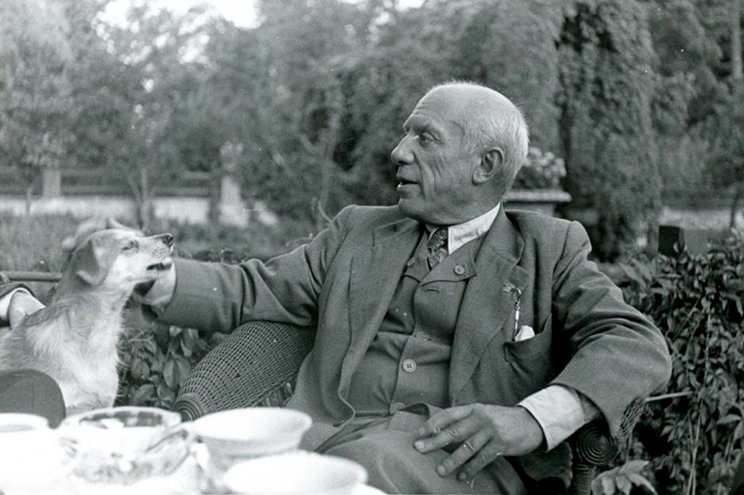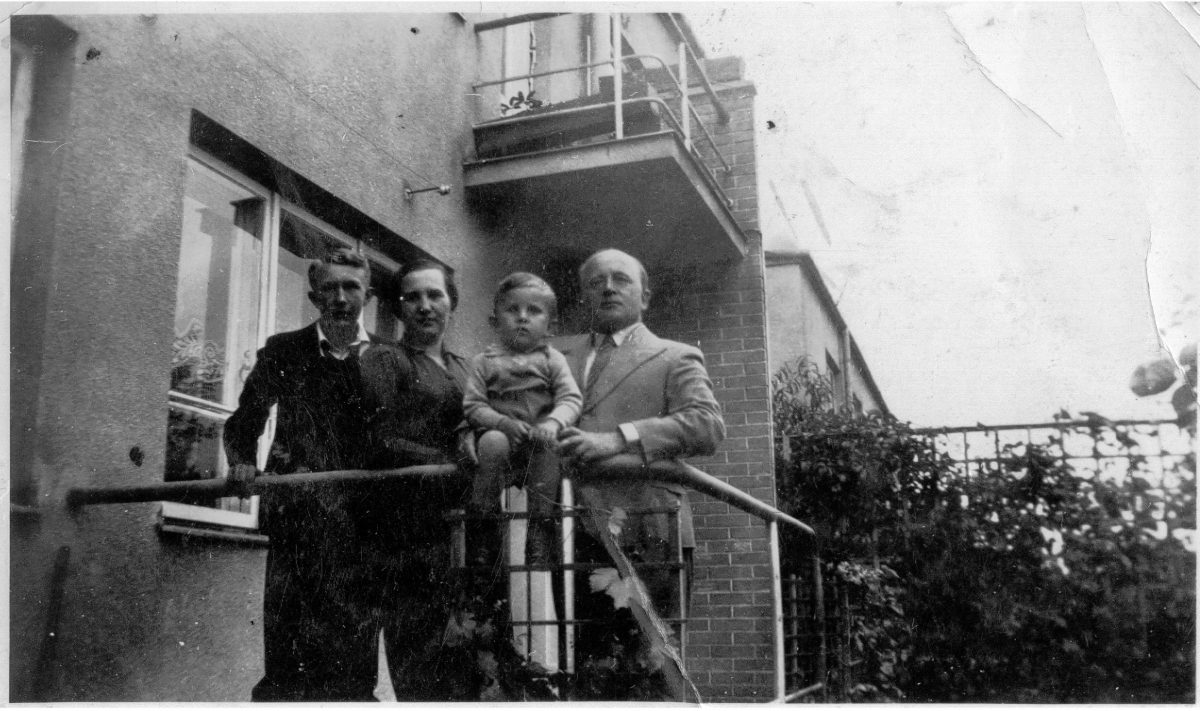Hidden Cities / LIVING WITH PICASSO
On the wall of one apartment in Koło neighbourhood in Warsaw, there’s a drawing made by Picasso. However, in the last 70 years it was forgotten, which one is it.

“Syrenka”, Picasso, 1948.
I was first introduced to the story of Picasso’s “Syrenka” in 2014 during my stay as an artist-in-residence at Ujazdowski Castle Centre for Contemporary Art. We were invited for a guided tour through Wola district, prepared by local architects and urban activists from CENTRALA.
The story of Picasso’s hidden drawing just stuck in my memory. I’m coming back to it in the context of my series of texts “Hidden cities”.

Picasso in Warsaw, September 1948.
Maestro in Poland
In August of 1948, the World Congress of Intellectuals in Defense of Peace took place in Wrocław. Picasso, already a world-known artist (and a communist) fighting for the world peace, attended the event among other invited members of cultural elite. For maestro it wasn’t only the first trip in the country, but also his first flight ever – the polish government sent a private jet to flew him to Wrocław.
Instead of the planned three days, his visit in Poland extended to two weeks. It was said that the experience of the post-war country fundamentally influenced his thinking. He saw Oswiecim, Krakow and lastly, Warsaw. Legend has it that he left his signature on a porcelain bowl in the Bristol Hotel. And not just that.
Picasso’s friends, distinguished avantgarde architects Helena and Szymon Syrkus, were his guides around the city. It was at this time that their great project was being realized: the “Koło” residential complex, designed in Le Corbusier style, in the Wola district. Modernly equipped apartments were intended for workers from nearby factories. After he had spotted some architectural sketches in the couple’s studio, Picasso expressed his interest to see the site.
He was fascinated by the idea of using the post-war rubble to produce new building blocks. Enthusiastically entering a random apartment (still unfinished) on September 4th 1948, he pulled a charcoal out of his pocket and with a few strokes sketched a symbol of Warsaw, a mermaid – so called “Syrenka”, her profile strongly resembling his partner Françoise Gilot. The drawing generously filled the entire wall.
However, Syrenka’s original sword was replaced by a hammer. There are two versions of the story explaining this shift of narrative: one says that the hammer was meant to symbolize the working class – the future inhabitants. According to the other version, Picasso had asked the onlookers what the mermaid should be holding – and nobody knew how does “sword” translate into French.

Inhabitants of Koło in 1950’s.
The life with Pablo
According to the legend, the apartment was first offered to a railway worker. He could not accept it – Syrenka’s oversized breasts upsetted him, he had small kids. Eventually a young couple moved in. At the beginning, they liked the idea of living with Picasso. Madam Franciszka Sawicka-Prószyńska was managing a visitors book. They welcomed guests from the whole country and beyond. For five whole years.
Imagine that you’re, a bit accidentally, hosting a gallery in your own apartment on a daily basis, sometimes welcoming around 400 visitors within a single day. Not mentioning how stressful it was for Mrs Sawicka, cleaning after all these people, bringing mud or dust their soles, all year long.
It was only a matter of time when they would get tired of receiving crowds of miners, school kids or politicians. Some visits even showed up unexpected – sometimes they would look out of the window only to see a big expedition waiting to see the drawing.
They’ve had enough of Picasso. Out of desperation, they put a curtain in front Syrenka. After some time they decided for a more radical solution: “move it or remove it” was their request, filed at the local housing coop. There was no response for a long time. In 1953, the couple asked for a permission to reconstruct the apartment, insisting that the drawing should be overpainted, too. After half a year the coop had finally approved with a following statement:
Dear Mrs. Franciszka Sawicka,
the board of WSM (Warsaw Housing Cooperative) has no objection to the refurbishment of the space no. 28 at Deotymy Street 48, and agrees to overpaint the mermaid, drawn on the wall by the painter Pikacco.
Based on Wyrzykowski’s telephone order from December 18, 1953.
Painters came and folded out their ladders. One of them couldn’t resist commenting on the drawing: “Oh dear. Who did this? My brother-in-law would have done it better.” The mermaid disappeared within a few minutes (and I’m almost sure, with a whistling sound).
“And gone was Picasso”, remembered Mrs Sawicka sometime in the 1970’s.